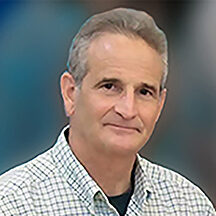Fundraising, Friendship, Fun
After leading 250 fundraising workshops, webinars, webcasts, podcasts and board sessions, we’ve scrutinized what’s worked, opportunities for improvement, audience feedback and industry trends. We are excited to announce a new virtual approach to heighten personal development and growth through dynamic interaction. It’s based on fundraising, friendship and fun — three pillars of good works profoundly linked and reinforcing one another. Put another way: Unless fundraising energizes friendship and fun, it is doomed to fall short of its potential. Programs will continue to be offered free to professional and volunteer non-profit leaders from organizations of all different sizes, missions and parts of the country. But also, to all men, women and youth benefiting from joining a “learning community” in which everyone has wisdom, experience and personal insights to share to enrich the discussions. The intent is for everyone to grow and enjoy themselves while doing so — embracing the spirit of “edutainment” at its finest. The LinkedIn community, Philanthropy Network, 115,000 members strong, will be reinforcing and magnifying our impact.
The schedule is built on Zoom-based 60-minute enrichment broadcasts, the first Wednesday of each month, from 4 to 5 p.m. Central time. The goal is enlightening and interactive exchanges between subject matter experts and audiences. For context, think of the lively chemistry of TV talk shows. Emphasis is on thoughtful and free flowing exchanges. Shows will be roughly structured around the following four segments:
(a) What’s trending in philanthropy?
(topics subject to updating)
February: Case for Unrestricted Giving
March: Potential and Limits of AI
April: $84 Trillion Wealth Transfer
May: Communication Channels
June: Sector Collaboration
(b) MIA — Missions In Action — Stories of inspiring non-profits from around the country that are truly making a positive difference featuring professional and volunteer leaders and reinforced by video and other visual support. Guests will be challenged to delineate how their good works stand out from all the other good causes. What are their priorities for their first or next million-dollar gift?
(c) Fundraising Urgent Care — Responding to inquiries from the audience about patching up operational wounds and moving their good causes forward.
(d) The Closing Bell — Highlights of chief lessons of the show and topics on the horizon to be addressed in future shows.
Note that I will also be working with our producer, John Largent, CEO Largent Media, to generate a separate series of stimulating non-interactive videos addressing targeted “how-to” topics.
The inaugural enrichment broadcast is scheduled for Wednesday, February 5th, 4 to 5 p.m., Central time. You can register here. By all means spread the word and encourage friends and colleagues seeking to lead happier, healthier and more fulfilling lives to join us.
As the calendar pages flip, we realize that we have more questions than answers. But insatiable curiosity culminates in robust learning and growth. Eskin Fundraising Training is ready to embrace the new year with a renewed sense of hope and optimism. We cherish our work and playing an ever so humble part in advancing good works.
Of course, professional goals and objectives take a backseat to those in our personal lives. As we grow older, we appreciate that nothing is so valuable as spending time and bonding with family, friends and loved ones. As we age, the less likely we are to look back and regret that we didn’t spend enough time focusing on careers.
But work remains a big part of all our lives. We like to think that our professional agenda syncs and reinforces our personal agenda.
With that perspective in mind here are our top 10 resolutions for 2025:
(1) Remain committed to the long game. Don’t worry that the rewards aren’t measured in hours, days or even longer periods. Impacting individuals and single organizations for the better makes a difference.
(2) At the same time, constantly consider the exciting possibilities of scaling up. How can we turn local partnerships into something more impactful on a national and grander scale?
(3) Explore with local non-profits, how we can build momentum by reaching out to their national organizations and structures. There is so much in common that local organizations share with their peers in addressing challenges and opportunities.
(4) Train the trainers. Virtually every non-profit, especially at the national level, designates professionals and volunteers responsible for resource development. A top priority is designing, implementing and refining instructional programs to elevate the effectiveness of those individuals.
(5) Engage, engage and engage even more deeply. Our in-person and virtual programs succeed when participants enthusiastically share personal experiences, lessons learned and insights.
(6) Engagement is especially challenging in the virtual world characterized by computer fatigue. We will relentlessly embrace new technology and new ways of empowering virtual training and dialogue to mimic the magic of in-person interactions. Hybrid programming is a priority.
(7) Virtual communication and programs are so much more efficient and accessible. Double down on our commitment to energize it and realize its potential. We live in a world where no one seems to have enough time. Virtual communication and professional development create the gift of time and overcome hurdles of distance, time and expense.
(8) Welcome opportunities at every turn to feature subject matter experts and audiences from all different parts of the world. Virtual communication and professional development make this so much more doable.
(9) Being small also means being nimble. New programs and services will offer assistance to non-profits emphasizing immediacy and turnaround. One concept to be rolled out in the new year is Fundraising Urgent Care.
(10) Empower, mentor, coach and provide support to the men and women hungry for it. Paying forward is the surest way of paying back. Each of us represents the sum of our experiences and our golden interactions with all those who have touched us and who we have touched. As we advance in years, share what we’ve learned with all those who will lend an ear.
So much for what we think. Please give us a few moments to share your thoughts on the future direction of our learning community through this online survey.
The Brain Trust

The whole idea behind our learning community approach is that no single individual has all the answers, but within our meeting space — physical or virtual — the answers are almost always in the room. To help lead the discussions we are recruiting subject matter experts from a wide range of disciplines including but reaching far beyond fundraising and advancement. Because whether we like it or not, our work — like life itself — is complex and multi-dimensional. Our core group of subject matter experts provide breadth and depth of wisdom, experience and powerful personal insights on the challenges and opportunities confronting us every day. From month to month, we will be updating the lineup to reflect the ever-changing environment around us. I consider myself so lucky to consider each one of them a valued colleague and friend. The sage voices helping lead our discussions in February include:
- Brad Smith, Founder, Rootstock Philanthropy & Founder, Philanthropy Network
- Talli Dodge, Founder & CEO, A Mindful Workplace
- Don Gleason, President, Achieve New Heights
- Marjorie Hope, Author, CONNECTIPLOMACY: Using our Differences to Connect
- Rhanda Luna, Arts & Culture Diva
- Pam Tyler, Putting Special in Special Events
Our intention isn’t to create an echo chamber. Debate is healthy and will be embraced. Accordingly, we welcome different perspectives. But the focus will always fiercely be on substantive issues and how best to move forward in our organizations and in our lives. We expect nothing less from our audience — open, frank and fact-based input and feedback.
People Pleasers

Credit my wife Andrea for passing along this handle for describing professional and volunteer fundraisers. I feel like it fits like a glove. Ours is a noble calling. We get the privilege of observing people at their best. Keep in mind that no one is perfect, but when men and women choose voluntarily to make gifts of time talent and treasure to improve the lot of others, especially those who are struggling, they genuinely live up to the spirit of whatAbraham Lincoln’s “better angels of our nature.” In the most genuine and sincere fashion possible, our work is to value and seek out the goodness in people around us. This means devoting the time to getting to know them, their personal stories, values, priorities and needs. The task is to go way beyond developing so-called transactional relationships (which I’ve heard defined as something you have until something better comes along) and earn the trust of forging true friendships that grow closer and closer over time. We want them to smile with joy and pride. After more than three decades in the profession, I couldn’t imagine any endeavor more satisfying, rewarding and making us feel better about the precious time we are given to live life to the fullest. What better way to devote your career than to please people. I’m going to reach back to an article I wrote on LinkedIn in 2020 on what it takes to be a successful fundraiser.
Leadership Challenges

Dickerson Bakker’s annual study of non-profit leaders and staff examines key areas where respondents believe change is necessary. Their goal is to help spark change across the sector, and to inspire non-profit boards, C-suite leaders, and frontline staff to embrace a better way of leading, developing talent, engaging supporter audiences, and delivering mission impact. Key findings:
(1) Things are not as they should be: Survey respondents across all categories generally agree — improvements are needed. Most leaders do not rate their organization as “excellent” in any of 10 areas, and say at least one area is badly in need of improvement.
(2) Staffing and donor relationships are critical areas for improvement: When leaders and staff were asked to rate their organization’s effectiveness in the 10 areas, from staff compensation to fundraising strategy, two issues consistently came up: (a) having enough qualified staff for effective fundraising, and (b) too few mechanisms to gain meaningful feedback from donors.
(3) Non-profit employees want inspired leaders with bold vision: Non-profit employees ranked vision, relationship building, inspiring trust, and having strong communication skills to be the most valued elements of leadership.
(4) A perception divide exists between CEOs and frontline staff: Staff members give their organizations a lower overall rating when compared to the ratings of the C-suite leadership. On average, executives are more convinced they are effectively displaying key attributes of leadership qualities than are the people they are leading.
(5) An overwhelming majority of fundraisers desire new strategies for success: 94% of all respondents would like to see their organization shift its fundraising strategies.
(6) The non-profit sector is grappling with a serious crisis of misalignment: Both leadership and fundraising staff agree that their focus is misdirected yet, astonishingly, about half of the organizations in the study are sticking to their traditional methods year over year, risking a repeat of previous outcomes.
(7) Relationships change everything: Not only are relationships crucial within an organization, they’re crucial for effective fundraising. When asked whether their organization should focus more on raising near-term revenue or building long-term relationships with donors, the majority of leaders and staff have a desire to prioritize relationships: 56% want more focus on relationships with mass-market donors; 16% on near-term revenue. 50% want more focus on relationships with mid-level donors; 20% on near-term revenue. 46% want more focus on relationships with major donors; 19% on near-term revenue.
(8) Major donors stand out from the pack: 85% of respondents said that prioritizing either acquiring new major donors or retaining and developing current major donors was most important to them.
(9) There is a call to rethink how fundraising health is measured: 66% of respondents feel their organization values the wrong metric for understanding fundraising health and 45% believe the top measure should be donor retention.
(10) Mass market donor acquisition efforts can be de-emphasized: In 54% of cases, focusing on retaining and nurturing mid-level and major donors and pursuing new major donors is seen as more important than acquiring new mass market donors.
Marketing
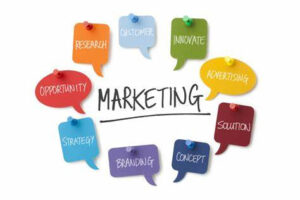
Smartsheet commissioned
ed a survey of 1,242 marketing and creative professionals. The findings highlighted that despite growing pressure, many still face significant challenges when proving their strategic value. The research also revealed some key insights that will better equip marketing and creative professionals to demonstrate business impact and be seen as strategic partners in 2025:Pressure is rising: 83% of professionals feel pressure to demonstrate the business impact of their work, with 60% noting the pressure has increased in the past year.
- Recognition as strategic partners is lacking for many: Only 51% report that their marketing team is viewed as a strategic partner by the organization.
- Shifts in strategy are making it more difficult to prove impact: 95% attribute their difficulties in demonstrating impact to changes in company strategy.
- Proving impact is hard, and technology can help: 87% believe better tools would help them work more efficiently, with project management tools and AI being top priorities.
How To Raise More Money

No matter what mission your non-profit serves — healthcare, education, economic development, arts and culture, animal welfare or a host of human services — we bet that the needs are escalating. More men, women and children, especially those who are struggling, are in dire need of the essential programs and services you provide. As our good friend and mentor, Marv LeRoy, President and Founder, Institute for Philanthropic Excellence, makes his mantra: More Money = More Mission. Developing resources in an uber competitive environment demands working hard and working smart. Fortunately, there is an abundance of research, data, case studies and best practices to point us onward and upward. Based on my career as both practitioner and consultant, here is a feature story from EIN Presswire on 10 strategies to raise more money in 2025. We hope that they are of value as you champion your good works.
Gender Lens
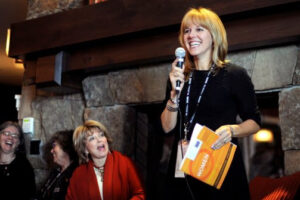
The Women’s Philanthropy Institute (WPI) at the Indiana University Lilly Family School of Philanthropy has released a comprehensive study exploring how women’s philanthropy has evolved in response to societal and economic changes — including the COVID-19 pandemic. While the report highlights women’s resilience in giving, it also reveals how the pandemic reversed long-standing trends in philanthropy, presenting new challenges for women donors and the organizations they support. Based on data from the Philanthropy Panel Study — the largest longitudinal study of philanthropy in the U.S.— Women Give 2024 analyzes giving patterns among women and men from 2000 to 2020, including the “declining donors” phenomenon, a steady decrease since the Great Recession in the share of U.S. households that participate in charitable giving. The findings underscore the importance of understanding how societal shifts and economic instability impact men’s and women’s giving differently, providing non-profit leaders with actionable insights to re-engage donors in a rapidly changing landscape. Highlights:
- Resilience in Giving: While the “declining donors” phenomenon is true for both men and women from 2000 to 2020, the decline started later and was less pronounced for single women compared to single men.
- Adaptability During Crisis: While the average dollar amount given by donor households has been relatively steady between 2000 and 2020, single women’s giving increased overall and to secular causes during the COVID-19 period, compared to single men.
- Pandemic-Era Shifts: Single women’s giving participation declined during COVID-19, but their average giving amounts increased. This indicates that women’s giving rates were more resilient prior to COVID-19, and that their giving during 2020 reversed a long trend of single women’s giving declining at a less severe rate compared to single men.
- Economic Challenges: Women who lost earnings during the COVID-19 pandemic were less likely to give to charity, appearing less resilient in their giving than single men or married couples who lost earnings during the pandemic.
Rural Challenges

You can make a compelling case that the foundation of the American success story, growth and prosperity is the awesome story of our agricultural infrastructure that has fed the nation and the world and done it so efficiently that the great majority has had the freedom to move to the cities and suburbs and enjoy lucrative employment and career opportunities. I am keenly aware of agriculture’s contribution by having spent the early phase of my career working for farmer-related organizations. But memories are short and agriculture and all those who toil in the heartland and rural areas are being forgotten. Charles Fluharty, President of the Rural Policy Research Institute, describes the modest giving to rural groups as a “moral failure” at a time when data show greater levels of child poverty exist in rural counties than in urban ones. Rural areas receive only about 7% of philanthropic spending, even though they account for 14% to 20% of the population. But there are reasons for hope, with more than a dozen new philanthropic collaboratives focused on rural areas. Some foundations have sought to improve their grant making in rural areas by hiring field coordinators to get closer to the places they’re trying to support. Rural America has earned and deserves our unstinting support.

America Dreaming
“The American dream” is a century-old phrase used to describe the idea that anyone can achieve success in the U.S, through hard work and determination. Today, about half of Americans (53%) say that dream is still possible. Another 41% say the American dream was once possible for people to achieve — but is not anymore. And 6% say it was never possible, according to a Pew Research Center survey of 8,709 U.S. adults.
While this is the first time the Center has asked about the American dream in this way, other surveys have long found that sizable shares of citizens are skeptical about the future of the American dream. There are relatively modest differences in views of the American dream by race and ethnicity, partisanship, and education. But there are wider divides by age and income.
On Bookshelf: Playing With Fire
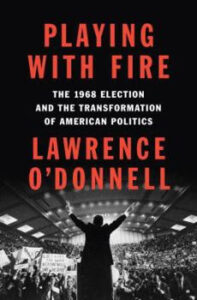
From the host of MSNBC’s The Last Word with Lawrence O’Donnell, an important and enthralling new account of the presidential election that changed everything, the race that created American politics as we know it today. The 1968 U.S. Presidential election was the young Lawrence O’Donnell’s political awakening, and in the decades since it has remained one of his abiding fascinations. For years he has deployed one of America’s shrewdest political minds to understanding its dynamics, not just because it is fascinating in itself, but because in it is contained the essence of what makes America different, and how we got to where we are now. Playing With Fire represents O’Donnell’s master class in American electioneering, embedded in the epic human drama of a system, and a country, coming apart at the seams in real time. Nothing went according to the script. LBJ was confident he’d dispatch with Nixon, the GOP frontrunner; Johnson’s greatest fear and real nemesis was RFK. But Kennedy and his team, despite their loathing of the president, weren’t prepared to challenge their own party’s incumbent. Then, out of nowhere, Eugene McCarthy shocked everyone with his disloyalty and threw his hat in the ring to run against the president and the Vietnam War. A revolution seemed to be taking place, and LBJ, humiliated and bitter, began to look mortal. Then RFK leapt in, LBJ dropped out, and all hell broke loose. Two assassinations and a week of bloody riots in Chicago around the Democratic Convention later, and the old Democratic Party was a smoldering ruin, and, in the last triumph of old machine politics, Hubert Humphrey stood alone in the wreckage. Suddenly Nixon was the frontrunner, having masterfully maintained a smooth fade behind which he feverishly held his party’s right and left wings in the fold, through a succession of ruthless maneuvers to fend off opponents on the left and right, and the great outside threat to his new Southern Strategy, the arch-segregationist George Wallace. But then, amazingly, Humphrey began to close, and so, in late October, Nixon pulled off one of the greatest dirty tricks in American political history, an act that may well meet the statutory definition of treason. The tone was set for Watergate and all else that was to follow, all the way through to today.
Profile In Entrepreneurism
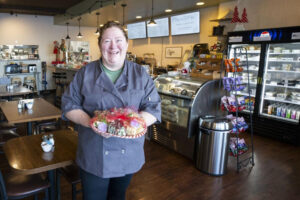
For 25 years, Amie Schaapman has been blessing others with food through Crazy Lady Catering. Schaapman expanded her vision last year, with the grand opening of Crazy Lady Kitchen, a vibrant brick-and-mortar establishment located in the heart of Quincy, Washington. Schaapman’s passion for cooking began when she was a child, inspired by her mother and shaped by the challenges of a modest upbringing. “We grew up very, very poor,” Schaapman said. “I’ve been cooking since I was young. We had to create meals with what we had. So, I guess cooking just came naturally.”
The menu at Crazy Lady Kitchen reflects Schaapman’s commitment to quality and freshness. Special meals change weekly, and customers can enjoy a variety of consistent breakfast and lunch options.
Quiz: Kindest U.S. Cities
Kindness creates a sense of belonging and connection, something more precious than gold today. Wallet Hub has researched America’s kindest cities using key indicators such as volunteer hours, most sheltered homeless people, and cities with the most donations per capita, to name a few. Match the following cities with their respective ranking (higher is kinder.) Answers are shown at the bottom of the page.
1. Anchorage a. No.1
2. Boston b. No.2
3. Madison c. No.3
4. New York d. No.25
5. Omaha e. No.30
Stratagems is published monthly by Jim Eskin, Founder of Eskin Fundraising Training, LLC. We offer workshops and customized training sessions for board members, staff and volunteers of non-profit organizations of all kinds and sizes. For details about our services and information, or to find out how to schedule a training session for your organization, visit our website. Follow our events on Facebook, and read more articles about philanthropy on our LinkedIn page.
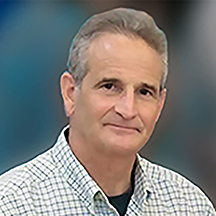
Jim Eskin, Founder
Eskin Fundraising Training
Email: [email protected]
Cell: 210.415.3748
www.eskinfundraisingtraining.com
|



